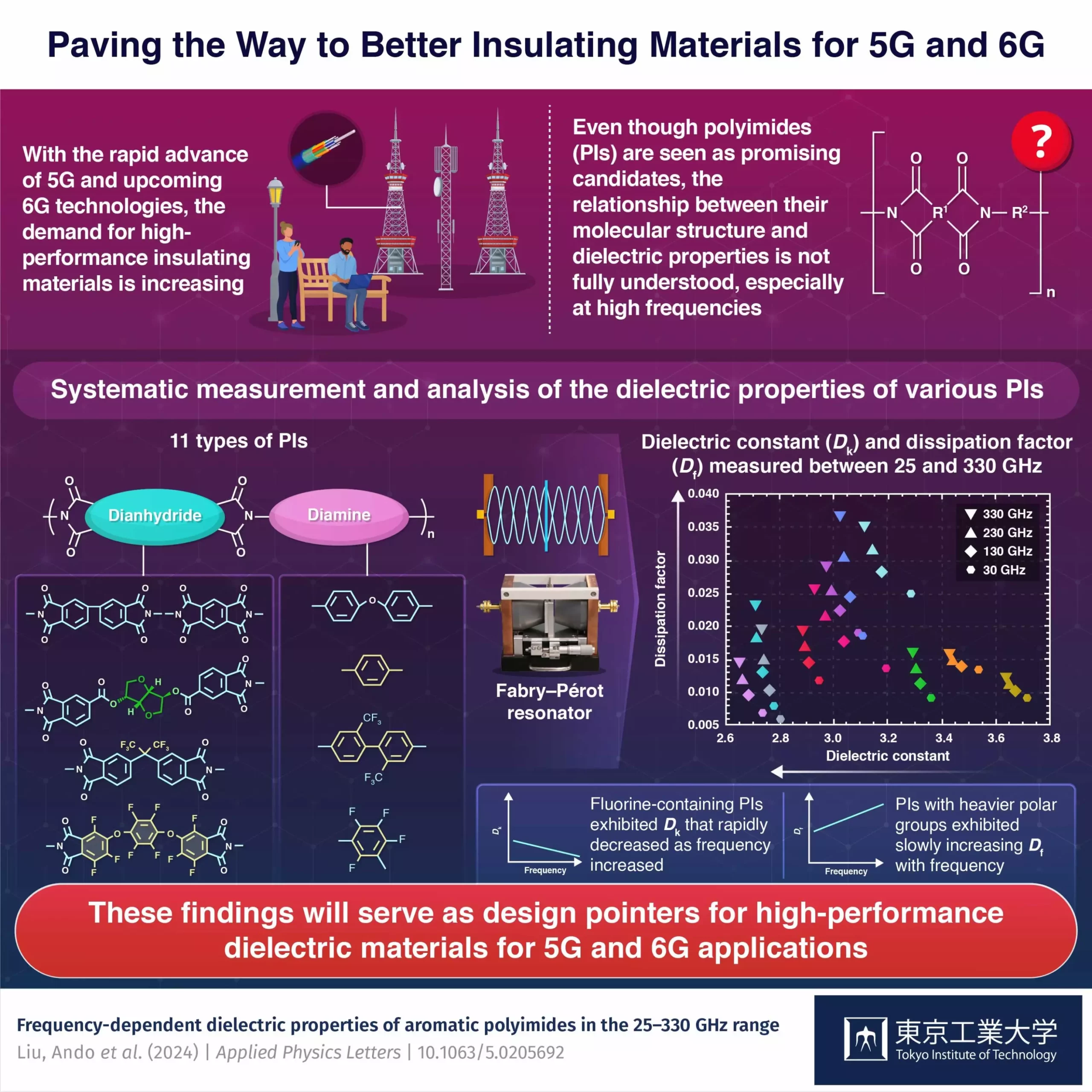The advancement of 5G technologies has paved the way for the exploration of even more cutting-edge solutions for future wireless communications, such as 6G. However, the challenges posed by operating at extremely high frequencies, particularly in the terahertz range, are becoming more prominent. Signal attenuation and interference issues are major roadblocks that need to be addressed in order to ensure reliable and efficient communication systems for the next generation of wireless networks.
While glass- and ceramic-based insulating materials have traditionally been used to address these challenges, their high cost and complex fabrication processes make them unsuitable for mass-produced devices that are essential for widespread adoption in 6G technologies. This has prompted researchers to consider polymeric materials as potential alternatives. Polyimides (PIs) have emerged as promising candidates due to their exceptional thermal stability, mechanical toughness, flexibility, lightweight nature, and favorable dielectric properties.
A research team from the Tokyo Institute of Technology, led by Professor Shinji Ando, recently conducted a study on the dielectric properties of various polyimides to explore their suitability for high-frequency operation. The team’s findings were published in Applied Physics Letters on June 6, 2024. The study aimed to establish a correlation between the molecular structure of PIs and their dielectric properties, focusing on the 110-330 GHz frequency range.
Using a Fabry-Pérot resonator, the researchers measured the dielectric constant (Dk) and dissipation factor (Df) of 11 different PIs with varying molecular structures. The results revealed that PIs with higher fluorine content exhibited lower Dk values, indicating superior dielectric properties. Additionally, the study found a negative correlation between the increase in Df and the polar fraction of the PIs, highlighting the importance of polymer structure in determining dielectric performance.
The insights gained from this study have significant implications for the development of high-performance polymer-based insulating materials for 6G technologies. By understanding the relationship between molecular structure and dielectric properties in PIs, engineers can optimize material design to minimize signal loss and maintain signal integrity at high frequencies. Further research, including spectroscopic studies in the terahertz range, will be crucial for identifying the best type of PIs for future 6G applications.
As the demand for faster and more reliable telecommunications continues to grow, the exploration of advanced materials like polyimides holds immense promise for the future of wireless communication systems. By leveraging the unique properties of PIs, researchers and engineers can overcome the challenges associated with operating at terahertz frequencies and pave the way for the next generation of high-speed, high-capacity wireless networks.


Leave a Reply